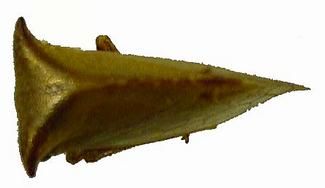
 |


Habitat
Adults: terrestrial
Immatures: terrestrial
Feeding Habits
Adults: phytophagous
Immatures: phytophagous
Size: 10 to 12 mm
Flight : unknown
North American
Species: 69 in Canada
|
Homoptera Membracidae
Treehoppers
Front Wings: membranous
Hind Wings: membranous
Mouthparts: sucking
Antenna Length: shorter than body
Antenna Shape: straight
Front Legs: unmodified
Hind Legs: unmodified
Special Characteristics:
Treehoppers can be recognized by the large pronotum, which is extended backward to cover the abdomen and sometimes covers the head as well. In some species the pronotum has spines or other projections.
|
|
Species:
Strictocephala bubalus
Common Name:
Feeding Habits: This species feeds on a wide variety of plants including alfalfa, willow, elm, cherry, locust, and orchard trees. They may also feed on potato, tomato, clover, goldenrod and aster.
Distribution:
Southern Canada
Comments:
This is the most widely distributed and familiar treehopper in Canada. It is found in forests, orchards, crop fields and meadows.
|

|